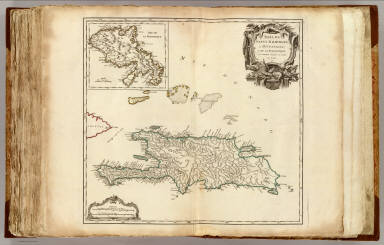The first clear evidence of rum production – that is, a strong alcoholic beverage made from the fermentation and then by the distillation of the products of sugar cane – in the West, can be found in Brazil at the beginning of the 1600s.
However, it is common knowledge in the rum world that if not the very birthplace, the cradle of rum was the English colony of Barbados round 1650. There, it is claimed, a real commercial production of rum started. This common knowledge relies mainly on the book of Richard Ligon “A True and Exact History of the Island of Barbados” published in 1657. Ligon visited Barbados from 1647 to 1650 and described the new distilled beverage as “the drink of the island, which is made of the skimmings of the Coppers, that boil the Sugar, which they call Kill-Devil”.
But, after thorough research on the Early French Caribbean, a subject little studied by scholars and well-nigh unknown to the public at large, I have come to the conclusion that things may have gone otherwise. According to some documents, a commercial production of rum may have started in Saint-Christophe, Martinique and other French islands, a few years before it did in Barbados.
It would seem that everything started in Saint-Christophe, present-day Saint Kitts. The English settled there in 1623, whereas the exact beginning of the French colonization is uncertain, around 1625. What is certain, albeit forgotten, is that the French had been sailing in the Caribbean, had fought against the Spanish and had temporarily inhabited some islands right from the beginning of 1500s. For the sake of simplicity, let’s say that they had arrived immediately after Columbus and before the English.
They partitioned the island, with the English in the middle and the French on either end. At the beginning, relations between the French and the English were good, and together, a little while later, they exterminated the Carib who lived on the island. Then their relations worsened and the island was disputed for years between the two powers, until the final victory of the British in 1783.
In 1626, at the instigation of Cardinal Richelieu, the Company of Saint-Christophe was founded in France to promote the colonization of Saint-Christophe and other islands. More French settlers arrived and they started to develop a society in many ways similar to the one, much better known, that was developing in Barbados in the same years. In 1635, the Company was re-founded under the new name Company of the Islands of America and it started the colonization of Martinique and Guadalupe. The Company got from the French Government a monopoly over trade, land ownership and various rights over the settlers. Like the English, the French too were looking out for land where to grow the tropical products so in demand all over Europe. At the beginning they grew tobacco, then they tried with other staples, among which sugarcane.
Also the French settlers drank a lot and wine and brandy were among the most sought-after goods. The Company endeavored to get sufficient quantities through, but they failed, so the wine and brandy imported from France were not enough and they were costly. The settlers resorted to contraband, buying from the omnipresent Dutch, but the prices stayed high. So, they tried their hand at producing in loco something to drink which was strong, plentiful and cheap.
The French called vin, wine, the grape wine itself and also other fermented beverages, so vin de canne, cane wine, is a fermented beverage made from sugarcane. On the other hand, they called eau-de-vie, water of life, every distilled beverage. So eau-de-vie de canne is water of life from sugarcane, that is, rum. For the sake of correctness, I believe it is fairer to show the original French documents first, then their English translation.
Minutes of the “Assembly of the Company’s Stakeholders”, 13 August 1639: “Sur la demande faite par Jean Faguet à ce qu’il plût à la Compagnie lui permettre à l’esclusion de tous autres pendant six ans de faire faire dans l’île de la Martinique et de Saint-Christophe de l’eau-de-vie soit de vin ou de tous autres fruits ou légumes qu’il pourra faire ou recouvrer par son soin et industrie dans lesdites îles, offrant de payer XX livres de pétun pour chacune barrique d’eau-de-vie qu’il fera, à la charge que nul autre ne pourra faire pendant lesdites six années sous peine qui seront ordonnées.
A été accordé audit Faguet de pouvoir faire pendant six années à l’exclusion de tout autre dans lesdites îles de l’eau-de-vie de ce qui croîtra en icelle, a la charge de payer à la Compagnie le XX° de l’eau-de-vie qu’il fera, avec defense à tous autres d’en faire dans lesdites deux îles pendant ledit temps à peine de confiscation de celle qu’ils feront et de mille livres de pétun d’amende.”
“Regarding the request made by Jean Faguet in order that the Company grant him for six years an exclusive licence to make water of life on the islands of Martinique and Saint-Christophe, both from wine and any other fruit or legumes that he will be able to grow or find through his ingenuity and industriousness on the above-mentioned islands, offering to pay XX pounds of tobacco for each cask of water of life that he will produce, on condition that during the aforementioned six years, nobody else is allowed to make it under the penalties which will be determined,
the aforementioned Faguet is granted exclusive licence to make water of life on the aforementioned islands, using what grows on them, for six years, on condition that he pays to the Company the XXth part of the water of life he will produce, with everybody else being banned from producing it on the two islands during said period under penalty of confiscation of the water of life they have produced and a fine of a thousand pounds of tobacco.”
- L. Mims in his “Colbert’s West India Policy” published in 1912 writes:” It is possible and even almost certain that it is a question of the manufacture of brandy from sugar cane” that is, rum. We cannot be completely sure, though. It is clear from the text that they meant to use local plants. Even before the Europeans arrived, the natives made various fermented beverages and the settlers drank them for want of anything better; the most widespread ones were Masbi, made from sweet potatoes and Oüicou , made from cassava. Perhaps Faguet meant to distill these beverages but, given the traditional production systems, the quantities were probably meagre. In any case, I have found no clear evidence. On the contrary, cane wine was relatively plentiful and cheap. It makes sense to think that M. Faguet wanted to produce also a spirit from sugar cane, that is, rum.
From “Relation de l’establissement des Francois depuis l’ann 1635” (more or less: “Report on the settlement of the French after the year 1640” ) published in 1640 by Jacques Bouton:
“Ils aiment fort l’eau de vie, qu’ils appellent du brusle ventre” “they [the slaves] are fond of a strong water of life that they call stomach burner”.
Later, the Company decided to start making sugar in their own right in Guadeloupe, where a few settlers had already been growing sugar cane for years. Here we can read what the Assembly of the stakeholders deliberated on 7 January 1643.
“Sur les requêtes présentèes par le capitaine Flament, serà écrit en sa faveur au sieur Aubert en l’île de Guadeloupe et au sieur de Leumont, intendant génèral des affaires de la Compagnie pour Saint Christophe. Lui serà expédié permission de faire de l’eau-du-vie durant trois ans, sans préjudicier à la liberté publique d’en faire à l’ordinaire, et d’en porter de France aux îles”
“Regarding the requests submitted by Captain Flament, letters in his favour will be written to Mr Aubert on the island of Guadeloupe and to Mr de Leumont, intendant general of the affairs of the Company on Saint Christophe. He will be granted permission to make water of life for a period of three years without prejudice to the public freedom to produce it as it is common, and to ship it from France to the islands.”
In other words, the Company grants Captain Flament permission to produce spirits, but not exclusively. Other colonists are specifically allowed the right to continue producing them, as evidently they had been doing for some time.
It appears clear from these documents that in the French Caribbean producing spirit drinks was common practice. But there is an even more interesting document.
From “Voyage des Isles Camercanes en l’Amérique” by Maurile de Saint-Michel, published in 1652: “Je n’ay jamais veu pays où ils se trouvent quelquefois plus de diverses sortes de boissons, qu’à S. Christophe: plus antée & francisée de mon témps eque la Martinique; Car les Hollandois y aportent de sa Biere; les Normans du Cider, mais il ne s’y conserve pas long temps; les Maloüins s’ s’arrestent a Madere, & en retirent du Vin qu’ils y apportent, & le vendemt bien cher; les Rochelois du Vin de Gascogne, que i’ ay veu y aigrir bien-tost; mais le vin-aigre s’en debite bien; tout le monde met peine d’y apporter de l’eau de vie, & c’est la vie de ce pays. Les uns du Rosossol; d’autres y font du vin de cannes de sucre, ie diray tantost comme il est fact; d’autres du Oüicou; d’autres du Masbi.”
“Never before have I seen a country where sometimes more diverse kinds of beverages can be found than on S. Christophe: more ancient and longer Frenchified than Martinique; as the Dutch bring their beer there; the Normans their cider, but it does not keep for long; those from S. Malo stop in Madeira and collect the wine which they carry and sell at a hefty price; those from La Rochelle the wine from Gascony which ages and becomes sour very soon; but vinegar sells well; everybody works hard to get water of life to the island, and that is the lifeblood of this country. Some send there [water of life] from rosolio; others produce it from sugarcane wine, and I will soon tell you how it is produced; others from Oüicou; others from Masbi.”
Here there can be no doubt whatsoever: Maurile de Saint Michel tells us clearly that on Saint- Christophe several types of spirits were produced regularly, among which one made from sugarcane: RUM. And his book was published 5 years before Ligon’s.
This is all for now, see you again in the next issue.
Marco Pierini
PS: I published this article on November 2018 in the “Got Rum?” magazine. If you want to read my articles and to be constantly updated about the rum world, visit www.gotrum.com


